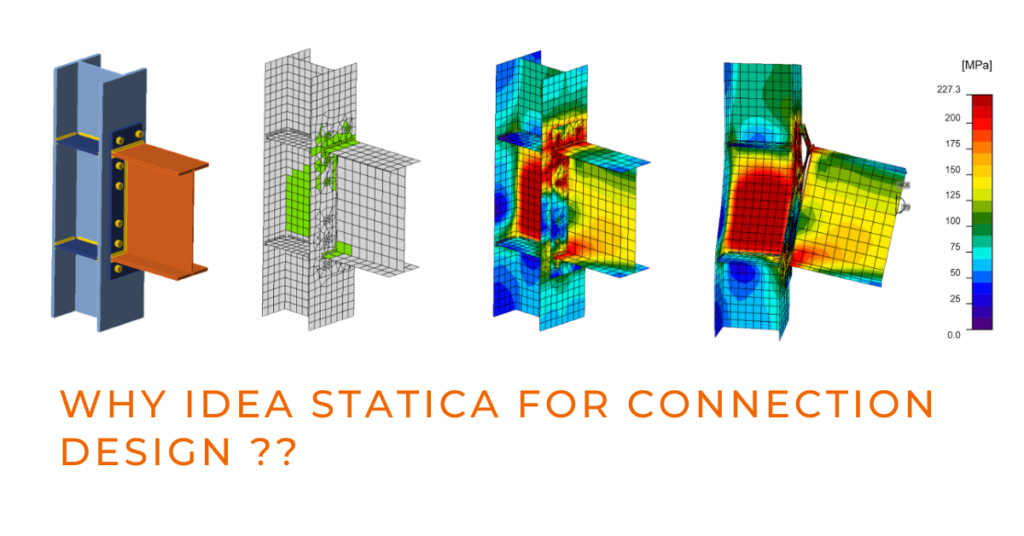What is the difference between conventional connection design and connection design with Idea Statica ?
Now say goodbye to all those formulae based spread sheets & softwares.
When it comes to connection-steel design, many civil and structural engineers have probably experienced agony. Experienced engineers understand the significance of connection design, but they require a tool that they can rely on for accuracy. To be safe, they frequently use thickened plates, bolts, and welds, which increase the cost. whereas inexperienced engineers wind up underestimating the importance of connection design, resulting in connection failure on site. No engineer would want to be in any of the situations listed above. Engineers strive to find online manuals of connection design, Excel sheets, and so on. However, all of this content covers a conventional set of connections. When it comes to non-standard connections, everyone suffers.
It should be mentioned that all of these formulae are the product of research that is based on FEM tools and full-scale model testing in laboratories, followed by refining the results of several specimens and expressing the behavior of the elements in the form of equations with some constants (which are often on the safe side). These efforts are made in the hope that practicing engineers will be able to obtain ready-made equations for connection design, eliminating the requirement for extensive FEM analysis and testing.
Creating the connections in full-fledged FEM software is a difficult undertaking. Even building a model takes a significant amount of time. This is when Idea Statica’s role and relevance come into play.
Conventional Connection Design
-
- Has limitations due to lack of generality. Any change in connection geometry leads to rebuild the applications.
-
- Lengthy arithmetic checks. which is more time consuming for verification and validation.
-
- No 3D deformed shapes which could help foster conceptual understanding and visual and spatial thinking.
-
- Mechanical Approach with respect Formulas presented in various Textbooks, Manuals, Design Guides, Geometry dependent i.e., slight change in geometry or complex geometry, the calculation becomes too lengthy and could not capture the criticality in the first place.
-
- May lead to either uneconomical or unsafe connection design.
CBFEM – Idea Statica
-
- Lubus Sabatka and his team developed CBFEM-component based FEM as a synergy between a strong FEM solver and various FE components utilized in connection design.
-
- Each connection component is discretized into the layer of mesh in order to estimate the strain-stress in various plate elements.
-
- Bolts are idealized as nonlinear springs with appropriate stiffness.
-
- Welds are idealized as a MPC, multi point constrains in order to estimates the forces.
-
- Strain Limit is restricted to 5% as per Code & stresses are limited to the yield stress.
-
- Detailed calculation report as per the respective country codes. Variety of Codes covered are American, European, Indian, Chines, Russian, Australian & Singaporean.
In idea statica, one can find a magnificent blend of structural engineering and cutting-edge software engineering. It provides excellent UX/UI while in use. There are only a few operations that can be applied to almost any geometry.
with Ides Statica, let’s go to the basis from where these formulas have been developed, lets handle any connection geometry, lets explorer the country specific code checks, Let’s compare the cost of the stuff you are designing, let’s try out different options so as to select the best one which is cost effective yet robust. Idea Statica offers limitless possibilities in steel connection design.






